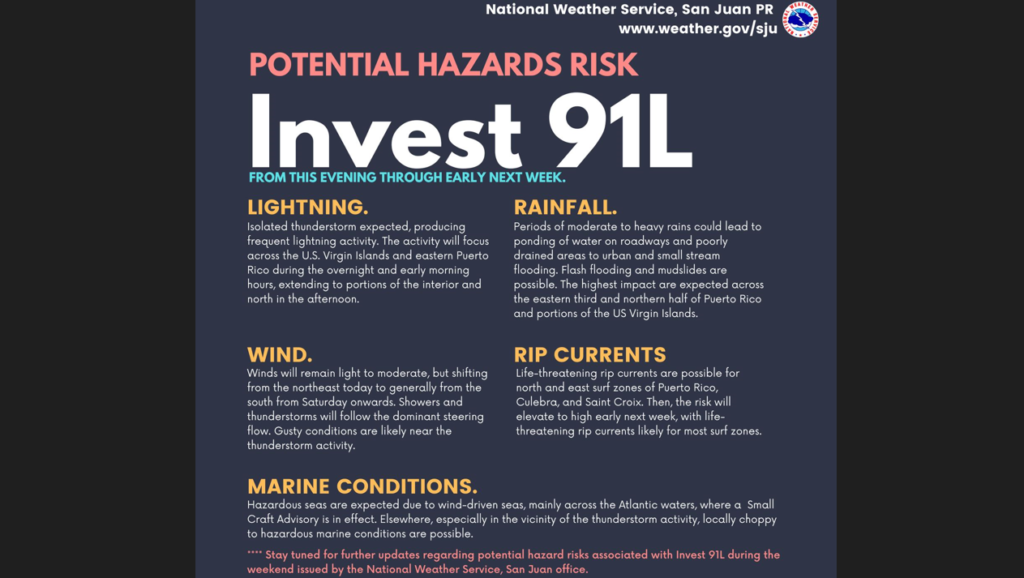MIAMI — As the U.S. Virgin Islands enters the third month of hurricane season, the National Hurricane Center (NHC) is monitoring four active tropical waves in the Caribbean Sea and Atlantic Ocean.
Danielle became the first hurricane of a strangely quiet Atlantic hurricane season as it pushes towards the Azores near Bermuda.
For the next five days, the NHC does not expect new tropical cyclones to form. However, the agency is monitoring four unnamed tropical waves, including two in the Caribbean and Atlantic, that are expected to be active for the next 24 hours.
The first wave is located north of Africa’s Cape Verde, moving at a speed of 17 mph, and is surrounded by Saharan dust, according to Naples Daily News. The second wave is being monitored in the central Atlantic between the British Virgin Islands and Cape Verde moving west at 19 mph while also embedded in Saharan dust.
The Caribbean has one wave traveling west at 18 mph just south of Puerto Rico and the fourth wave in the central Caribbean moving west at 17 mph just south of the Cuban capital city of Havana.
A tropical wave can help spawn a storm or hurricane in the Main Development Region, the area between the coast of Africa and Central America where most African waves originate and moves 3,500 miles across the Atlantic Ocean. However, some storms may make it to the U.S. coastlines or part of the Caribbean island, but others do curve harmlessly north toward the open ocean.
This summer, tropical storms have not materialized near the same frequency as years prior. The last-named tropical storm was on July 2, and there have only been four occasions between July 3 and August 4 when the Atlantic has had no named storms.
These tropical waves usually develop off the west African coast in August and, if conditions allow for it, turn into tropical developments during the Hurricane season. However, Saharan dust cross moving through the Atlantic is contributing to the low frequency of these storms.
The dust suppresses tropical cyclones and keeps waves from manifesting into tropical developments due to the warmth, dryness, and strong winds. During the late spring and summer, these dust clouds travel thousands of miles from the Sahara desert in Africa.
Colorado State University hurricane researcher Phil Klotzbach said that this is the first time since 1941 that the Atlantic has gone from July 3 to the end of August with no named storms.
[wpedon id=23995]
